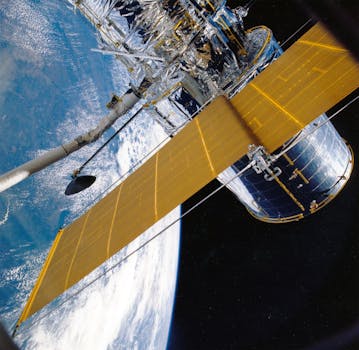The Future of Satellites: Revolutionizing Global Communication and Exploration

The Future of Satellites: Revolutionizing Global Communication and Exploration
The future of satellites is rapidly evolving, with advancements in technology and innovation leading to improved global communication, navigation, and space exploration. The use of satellites has become an essential part of our daily lives, from providing internet connectivity to enabling accurate navigation systems. As technology continues to advance, the future of satellites looks promising, with potential applications in various fields, including Earth observation, space exploration, and telecommunications.
Advancements in Satellite Technology
Recent advancements in satellite technology have led to the development of smaller, more efficient, and cost-effective satellites. The use of nanosatellites and cubesats has become increasingly popular, offering a more affordable and accessible option for satellite deployment. These small satellites are capable of performing a variety of tasks, including Earth observation, communication, and scientific research. Additionally, the development of reusable rockets has significantly reduced the cost of launching satellites into space, making it more feasible for companies and organizations to deploy their own satellites.
Applications of Satellites in Various Fields
Satellites have a wide range of applications in various fields, including Earth observation, space exploration, and telecommunications. Earth observation satellites are used to monitor climate change, track natural disasters, and manage natural resources. Space exploration satellites are used to study the universe, search for life beyond Earth, and explore new planets and galaxies. Telecommunication satellites are used to provide internet connectivity, enable global communication, and support navigation systems.
Challenges and Opportunities in the Satellite Industry
Despite the many advancements and applications of satellites, the industry still faces several challenges, including space debris, regulatory issues, and competition from emerging technologies. The increasing amount of space debris in Earth’s orbit poses a significant threat to satellite operations and the environment. Regulatory issues, such as licensing and spectrum allocation, can also hinder the growth of the satellite industry. Furthermore, emerging technologies, such as 5G and fiber optic communications, may compete with satellites for market share and investment. However, these challenges also present opportunities for innovation and growth, as companies and organizations work to develop sustainable and efficient solutions for the satellite industry.
Conclusion
The future of satellites is bright, with advancements in technology and innovation leading to improved global communication, navigation, and space exploration. As the satellite industry continues to evolve, it is essential to address the challenges and opportunities that arise, ensuring a sustainable and efficient future for satellite technology. With the potential applications of satellites in various fields, including Earth observation, space exploration, and telecommunications, the future of satellites is sure to be exciting and transformative.





